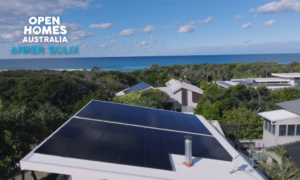The carbon tax is here and the Government is continuing to operate in promote and defend mode. But it may want to be careful in how it fends off attacks from the Opposition; lest it raises the ire of solar-supporting voters.
During Sunday’s Meet The Press on Channel 10, Minister for Climate Change and Energy Efficiency Greg Combet criticised Tony Abbott’s “Direct Action” policy for reducing carbon emissions, stating:
“And even if he puts his own policy into action, this so-called direct action policy, that’s to deploy solar panels and plant trees and buy emissions reductions from large polluters – guess how that’s paid for? Out of people’s taxes. And guess what the cost of deploying solar panels on rooftops costs, per ton of greenhouse gas emissions it’s reduced? Anything up to $400 a ton of greenhouse gas emissions that are reduced,” said Minister Combet.
Perhaps it was an honest mistake on Mr. Combet’s part, but solar panels costing “up to $400 a ton” in terms of carbon abatement is a gross exaggeration.
The use of such inflated figures is a well-worn page in the anti-solar playbook; a page that even some nay-sayers have ripped out as it simply isn’t true. As Mr. Combet apparently doesn’t rank among the anti-solar brigade, his choice of figures was curious and possibly based on the cost of rooftop solar power some years ago.
The price of solar panels and associated equipment has dropped dramatically over the last couple of years. Additionally, solar panels have become far more efficient. Aside from the many other benefits of residential solar, the price reduction and improvement in efficiency has positively impacted on associated carbon abatement costs.
For example, based on the outright purchase of a 2.09kW solar power system at full retail price and without any form of subsidisation, an assumption of a 25 year serviceable life and installation in Melbourne; such a system provides an abatement cost of $89 a tonne maximum according to information provided by Energy Matters – and that is a high end estimation. Even if a solar inverter should fail during that time frame, the cost of a replacement inverter taken into consideration still doesn’t bring the figure anywhere close to $400.
A very important consideration in the $89 price is that it is based on full retail price without any form of discount or subsidisation. Current subsidies only cover a part of a system’s cost. The owner of the system therefore pays the majority of the abatement cost, not the government or taxpayers who now only pay a fraction of that amount (around $31 a tonne). Additionally, the larger the system, the lower the abatement cost. Add to this the very thorny issue of many system owners not receiving a fair price for the solar electricity they export to the mains grid and it becomes cheaper again.
Not all solar panel arrays are installed in Melbourne and with some heavily populated areas in Australia having better solar resources, this pushes down the carbon abatement cost aspect even further.
While solar may not offer the very cheapest form of carbon abatement, a myriad of other benefits such as solar’s Merit Order Effect bringing down wholesale electricity prices needs to be considered in any related discussion.
At the very least, any argument regarding solar and carbon abatement should start with up-to-date figures and scenarios.














































